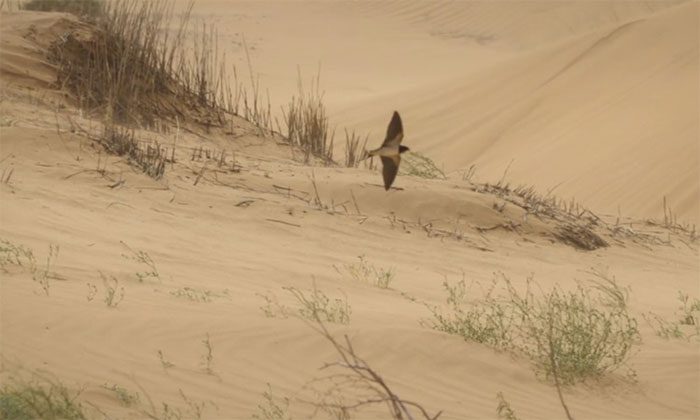A special film reveals the survival struggle of a tiny European swallow (Hirundo rustica rustica) amid a massive sandstorm while migrating across the Sahara Desert.
(Video: National Geographic).
Each year, the European swallow (Hirundo rustica rustica) migrates 9,700 kilometers from Northern Europe to Southern Africa, then returns. A new clip from National Geographic’s “Incredible Animal Journeys” program shows a lone swallow making its perilous flight across the vast desert.
“Swallows are incredibly fast and agile, so spotting a bird the size of a hand in a desert nearly as wide as the United States is always a challenge,” shares Sarah Gibbs, the program’s producer. “Filming a bird like this in a sandstorm with a long lens, while being buffeted by strong winds, adds another layer of difficulty.”
The production team spotted the swallow in Morocco at the northern edge of the Sahara Desert. This is where the swallow completes its journey across the desert after enduring several days in scorching temperatures without water. A scientist studying migratory behavior annually assisted the production team.

European swallow enduring a desert sandstorm.
The European swallow weighs between 17 to 20 grams and measures about 15 centimeters in length. When the sandstorm strikes, wind speeds can reach up to 64 km/h. The production team focused on the swallow that was truly struggling, tossed around like a boat in the sea. A mere blink could mean missing the moment the bird finds shelter in the bushes, waiting for the storm to pass.
The European swallow migrates north in the spring to breed and raise its young, then returns south as temperatures begin to drop before winter. This migration journey is fraught with dangers, with a high mortality rate each year. The Sahara Desert is one of the deadliest points along the route. According to Gibbs, swallows take five days to cross the desert without a single drop of water.
After crossing the desert, the swallow flies to a water source and drinks for the first time in days. From there, it still has to fly another 3,200 kilometers to reunite with its mate, starting the cycle all over again.


















































